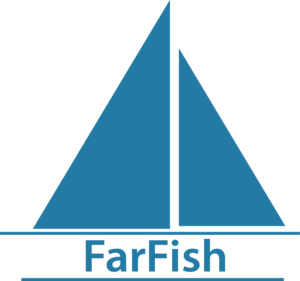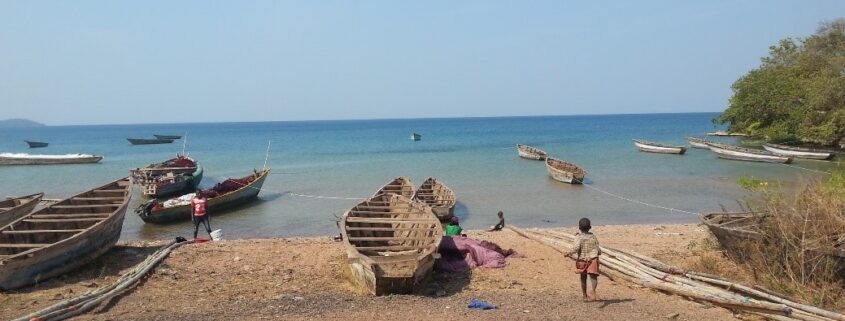Analysis of the conflict over the use of marine space in Madagascar
FarFish essay series
FarFish developed and ran a one-week University-level certificate course in Marine Management and Innovation in the spring of 2020. Over thirty participants attended the course and eight students completed the certificate programme by submitting a thesis on FarFish relevant issues. We have been publishing summaries of these essays here at the FarFish webpage. The final summary in this series is based on the work of John Bunyan Israel from the Institute of Marine Science at the University of Tolaria, Madagascar.
Endowed with important maritime domains, Madagascar’s exclusive economic zone (EEZ) of around 1,140,000 km2 plays an important role in the nation’s economy. The country benefits from an abundance of marine and coastal resources as well as exceptional biodiversity, largely due to its 5,600 km long coastline, mangroves totalling 327,000 ha and coral reefs spanning 1,400 km. Fishing and aquaculture are key to the economy, producing an estimated value of $213 million annually (7% of the national GDP). The fishing and aquaculture sector accounts for 13% of exports, 2/3 of which come from small-scale fishing, which provides direct employment for about 300,000 men and women and livelihoods for 500,000 people. The sector also contributes greatly to food security and protein intake for Malagasy people. However, the food security gained from the sector is threatened by the conflict between small-scale fishing and industrial fishing (foreign vessels), where industrial fishing is encroaching on small-scale fishing grounds.
Numerous regulatory conditions contribute to this unfortunate situation. First, the Malagasy law does not clearly divide fishing zones for small-scale, artisanal and industrial fishing. In practice, this has resulted in the different types of fisheries operating on the same grounds. Secondly, there is still no legislation providing real protection for community fishing zones. Madagascar does prohibit trawling in rivers and the sea within the two-mile zone from the coast, but this law is insufficiently enforced, and subject to derogations for shrimp fishing. Third, the management policy of the Ministry of Fisheries is based on incomplete laws and makes no mentions of the rights of small-scale fishers. Fourth, management measures with good intentions to preserve marine resources, marine protected areas (MPAs) (200 locally managed marine areas covering 14,000 km2) has led to the interest conflicts between small-scale fisheries and industrial fisheries as they minimize the space available for the small-scale fishers.
It does not help either that the massive migration of farmers from the highlands to the coastal areas due to deforestation and lack of rainfall has caused increased efforts and pressure on the marine resources. As the sea is common property, the farmers have turned to fishing where they make use of destructive practices such as poison (locally referred to as “laro”) to catch fish. Hence, there is a depletion of coastal resources in a time where demand for maritime protein increases. As a ripple effect, this has led to small-scale fishers being forced to go offshore, where they compete even more with industrial vessels.
In 2012, representatives from different fishing communities established a common network called the Mihari Network with the aim of uniting fishing communities and providing an arena where fishers can voice their opinions to the authorities. The network is fighting for the creation of an exclusive fishing zone specifically meant for the small-scale fisheries. In 2019 the Ministry of Fisheries launched an ad-hoc commission tasked with looking into the possibilities. However, this governmental initiative has stalled.
The industrial fishery does not respect the 12 miles that are reserved for small-scale and artisanal fishing according to the United Nations Convention on the Law of the Sea (UNCLOS). As Malagasy law does not specifically define the different fishing zones, the foreign vessels exploit this regulatory weakness. The consequences are disastrous for the marine resources of coastal regions, especially since factory ships discharge waste into the sea. All of this is causing the depletion of inshore resources and the decline in the quality of strategic resources exported such as crabs, which are now decreasing in size, thus value.
Overall, the conflict over the use of marine space in Madagascar is centred around the fact that the managerial and regulatory structure is weak. There is no clear law on the delimitation of zones so that each stakeholder can respect them. The Malagasy State also lacks the means to monitor fishing zones. Malagasy laws dating back to the colonisation should be revised to include a zonation of different fishing grounds; it must contain texts that protect and support small-scale fishing. Moreover, the Mihari Network must be supported in order to put pressure on the state to create an exclusive zone for small-scale fishing. Finally, the fishing communities must group themselves into various cooperatives and thus acquire new gear so that they can go out to sea and have more catches to meet the growing demand for animal protein. With such actions, the hope is that fair fishing in will be achieved in Madagascar.
John Bunyan Israel, a participant of the FarFish course Marine Management and innovation originally wrote the essay summarized here.




